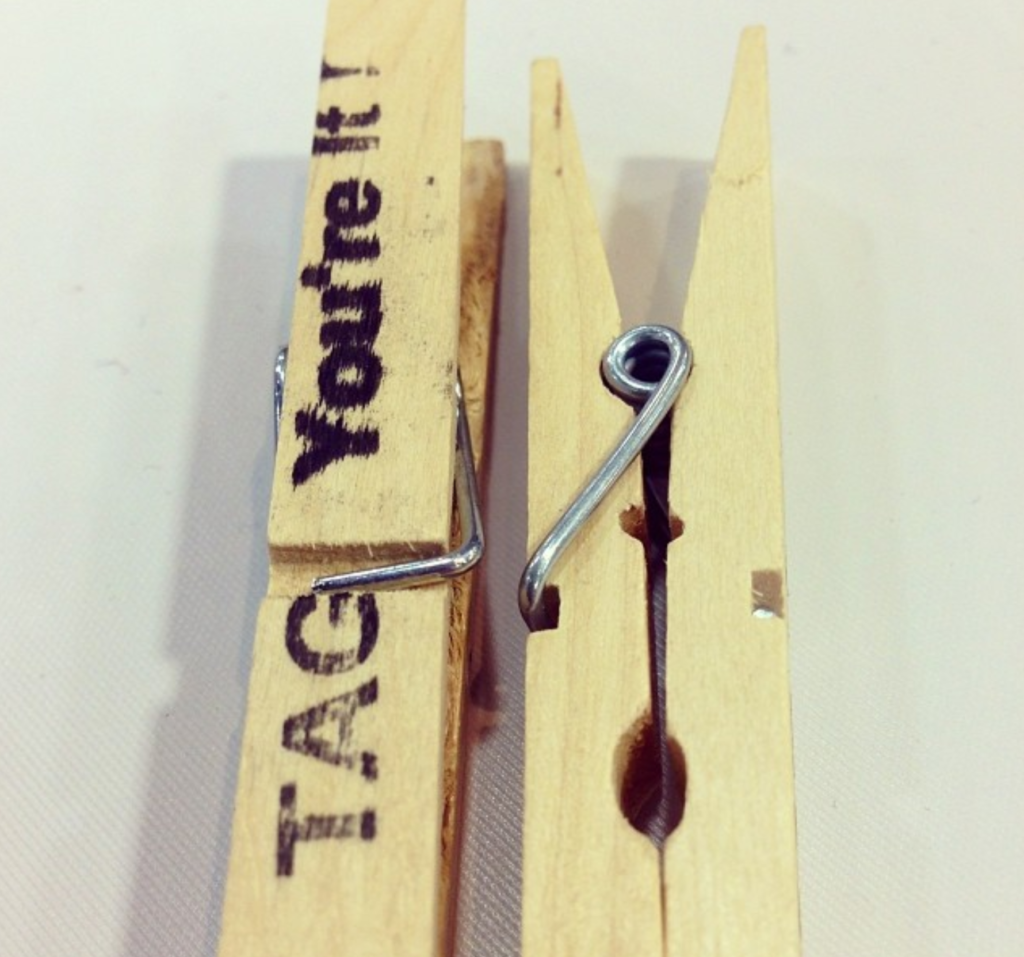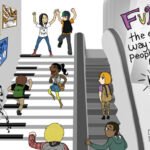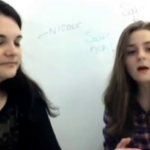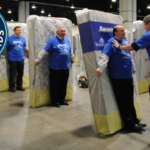During a recent visit to Pittsburgh, I set aside some time to visit with a former intern of ours studying at Carnegie Mellon University. As we walked through their beautiful University Center, I noticed a large number of campus clubs with tables set up trying to solicit students to join their organization. Every table was covered with reading material and candy to entice students to come closer. We also passed several bulletin boards littered with posters for upcoming campus events. It all reminded me of an advertisement I saw once for an online marketing course…
“If you market it, they will come.”
I don’t agree. Both in business and for university groups. I prefer the advice of DFT Tip #32…
“Show not tell.”
Don’t use an information table for your organization or event. Instead, set up an interesting or creative activity related to your topic, in a place with high foot traffic. You’ll get 10X more curious onlookers by showing what you do, verses telling people what you do. If nothing else, you’ll have spent your time doing the thing you enjoy instead of just talking about it from behind a table.
The same is true at trade shows for companies. A booth that has some sort of engaging interactive component showing what you do is going to be more interesting and memorable than a booth that only has marketing flyers. We occasionally go to trade shows ourselves to promote the creative engagement work we do. You better believe we show people what we do instead of just telling them.
For example, one engaging activity we’ve done from our booth is called Clothes Pin Tag. Prior to the conference, we buy 2,000 clothes pins and write “Tag You’re It!” on one side. Anytime someone comes by the booth, we tell them we have a challenge for them to try: tag these clothes pins on someone else’s clothing without them knowing. If they get caught, they get to introduce themselves and introduce that person to the game. If they run out, we tell them to come back by the booth to reload with more clothes pins.

The game quickly becomes addictive and people are tagging each other all over the conference. As a bonus, our booth has higher than normal traffic because people come back over and over to reload on clothes pins. I also love when people come by the booth for the first time and have an “ah-ha” moment that we are the ones running the clothes pin tagging game.
Ah-Ha Moments
Tania Luna wrote the book, Surprise: Embrace the Unpredictable and Engineer the Unexpected, which talks about the value of creating surprise “ah-ha” moments. She describes the experience like this:
“When people are surprised by something the brain goes through the ‘surprise sequence.’
It’s a strong neuro alert that tells us that something is important about this moment and we have to pay attention. Our cognitive resources are basically hijacked and pulled into the moment… your attention is completely in the moment.”
Surprise Freezes Your Brain
Tania goes on to talk about how when a human is surprised, their brain actually freezes for 1/25th of a second. In that split second, their brain gets super curious. It’s trying to figure out what’s going on and if it should engage fight, flight, or freeze.
Our brains like to find answers quickly so that they don’t have to waste as many resources processing. If you give someone an answer right away, like website information on the clothes pin, their brain does very little processing and remembering of the information. By prolonging the “Who’s behind this game?” question for the participants, we create a lot of “ah-ha” surprise moments at our booth when people eventually find out that it’s us. That surprise moment will stick with the person way longer because their brain is actually paying attention… which, as we’ve mentioned before, is the hardest part of The Engagement Pyramid.
Next time you’re in a position of recruiting others for a position, sale, or event, think about how you can “show not tell.” By doing so, you’ll not only stand out from the crowd, but you’ll also create a long-lasting memory.



